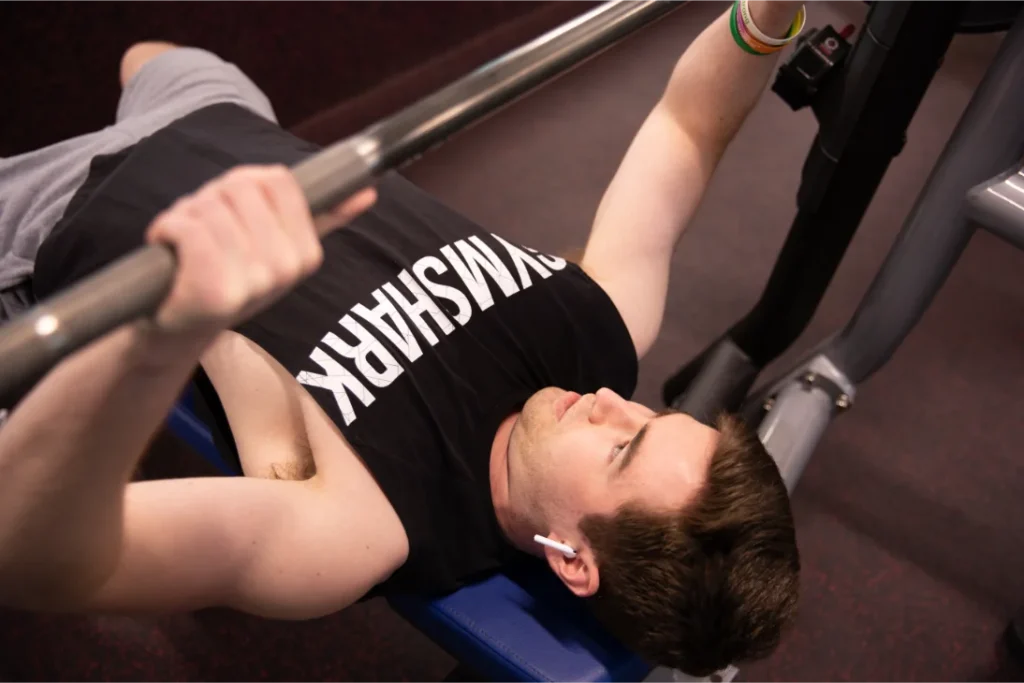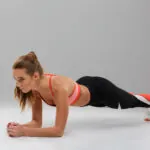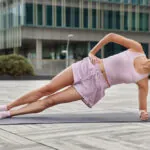Any type of fitness activity keeps us feeling youthful, strong, and brimming with vitality. But let’s face it, we’ve all had those days where we’ve pushed ourselves a little too hard, ending up with sore muscles or, even worse, an injury that sidelines us for weeks. That’s why, we need to ensure we’re not just working hard, but also working smart.
A good way to start working smart is to start incorporating a dynamic stretching routine into your fitness activities. Let’s see how.
What is dynamic stretching?
Dynamic stretching is a form of active movement that isn’t about holding a stretch but rather taking your body through ranges of motion that will better prepare you for your workout or sporting activity. It’s all about controlled, smooth, and deliberate movements that gently push your muscles and joints through their full range of motion.
It’s a warm-up routine that not only gets your blood pumping but also conditions your muscles and joints for the exertion to come.
Dynamic stretching is perfect for priming your body before any workout. From running and cycling to weightlifting and high-intensity interval training, this type of stretching is the key to unlocking your full fitness potential.
What is the difference between dynamic and static stretching?
While both are crucial for maintaining flexibility and overall health, they serve different purposes and are typically used at different times during your workout routine.
- Dynamic stretching: As mentioned earlier, dynamic stretching involves active, movement-based stretches. It’s like a gentle rehearsal for your workout, preparing your muscles and joints for the movements they’ll be doing during your exercise routine. This type of stretching is best done before your workout as it helps to increase muscle temperature, enhance joint flexibility, and boost your overall performance.
- Static stretching: On the other hand, static stretching is what most people traditionally think of when they hear the word “stretching”. It involves stretching a muscle to its furthest point and then holding that position for a period of time (typically 15-60 seconds). Static stretching is great for increasing overall flexibility and is most effective after your workout when your muscles are warm and more pliable.
Overall benefits of dynamic stretching
Dynamic stretching is an active routine that comes with a host of benefits that can revolutionize your workouts.
- Improved performance: Dynamic stretching helps to warm up your muscles, increasing blood flow and raising your body’s core temperature. This not only prepares your body for the workout ahead but also enhances performance by improving muscle efficiency and power.
- Increased flexibility: Regular dynamic stretching can help improve your overall flexibility. By taking your joints and muscles through their full range of motion, you can increase your mobility, which in turn can improve your form and make your workouts more effective.
- Injury prevention: Dynamic stretching serves as a fantastic preventive measure against injuries. It helps to prepare your muscles for the exertion to come, reducing the risk of strains, pulls, and other workout-related injuries.
- Enhanced muscle recovery: While it’s not its primary purpose, dynamic stretching can also aid in muscle recovery. By promoting blood flow to your muscles, it helps to reduce muscle fatigue and speed up recovery after a tough workout.
- Mental preparation: Lastly, dynamic stretching isn’t just about physical preparation. The act of focusing on your movement and breath can also help prepare you mentally for your workout, setting you up for a successful and focused session.
Who should try a dynamic stretching routine?
The beauty of dynamic stretching is that it’s not exclusive to any particular sport or fitness activity. It’s a versatile routine that can benefit just about anyone looking to enhance their performance and reduce the risk of injury.
Runners
Whether you’re a sprinter or a marathon fan, dynamic stretching can help to warm up your leg muscles, improve your stride, and reduce the risk of common running injuries like shin splints or a runner’s knee.
Gym-Goers
If you’re into weightlifting, dynamic stretching can help prepare your muscles for the heavy lifting ahead. It can also improve your range of motion, allowing you to get deeper into exercises like squats and lunges.
Athletes
For those involved in sports like football, basketball, soccer, or rugby, dynamic stretching can help boost agility, speed, and performance. It can also help to prevent injuries that can occur from sudden starts, stops, and changes in direction.
Cyclists
Cycling can put a lot of strain on your lower body. Dynamic stretching can help to warm up and prepare your quads, glutes, and hamstrings for the ride ahead.
Swimmers
Dynamic stretching can help swimmers by improving shoulder mobility and core stability, which can enhance stroke efficiency and prevent shoulder injuries.
Dancers
Dance requires a great deal of flexibility, coordination, and strength. Dynamic stretching can help to prepare the muscles for the wide range of movements in dance, improving performance, and reducing the risk of injury.
Example of dynamic stretching routine
Now that we’ve talked about the why, let’s get into the how. Here’s a simple yet effective dynamic stretching routine that you can incorporate into your workout regimen.
- Leg swings: Stand next to a wall or a sturdy object for support. Swing one leg forward and backward in a controlled manner. Do this for about 10-15 swings, then switch to the other leg. This stretch is great for warming up your hip flexors and hamstrings.
- Arm circles: Extend your arms out to your sides, parallel to the ground. Start making small circles with your arms, gradually increasing the size of the circles. After about 10-15 seconds, reverse the direction. This stretch is excellent for warming up your shoulders.
- Walking lunges: Step forward with your right foot and lower into a lunge. Push off with your right foot and bring your left foot forward into the next lunge. Continue this for about 10 lunges on each leg. This dynamic stretch activates your quads, glutes, and hamstrings.
- High knees: Stand tall and march in place while lifting your knees as high as possible. Try to keep a brisk pace and do this for about 30 seconds. This stretch is perfect for warming up your hip flexors and increasing your heart rate.
- Butt kicks: Just like high knees, but this time you’ll be kicking your heels up towards your glutes. Keep a brisk pace and perform this for about 30 seconds. This stretch is great for your quads and hip flexors.
- Inchworms: Stand tall with your feet hip-width apart. Bend at the waist and touch the floor with your hands. Walk your hands forward until you’re in a push-up position. Then, walk your feet towards your hands. Repeat this for about 5-10 reps. This stretch targets your entire body, with a focus on your hamstrings and core.
Final thoughts
Whether you’re a runner, a weightlifter, or a dancer, dynamic stretching is your secret weapon for a more effective and efficient workout. Incorporate our suggested dynamic stretching routine into your workout regimen and feel the difference.





